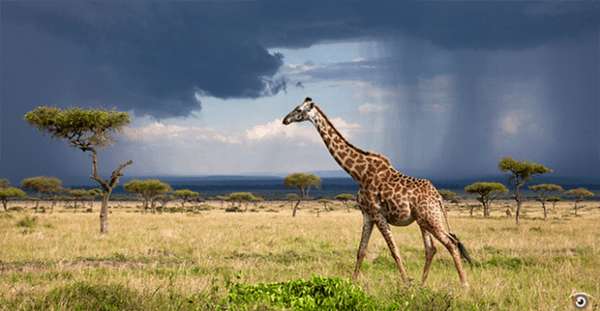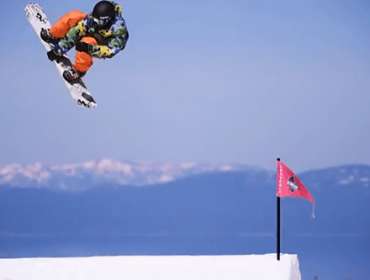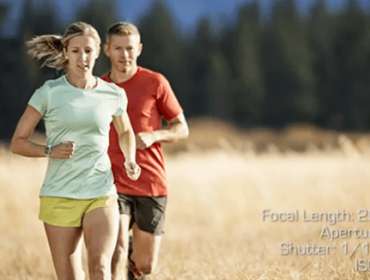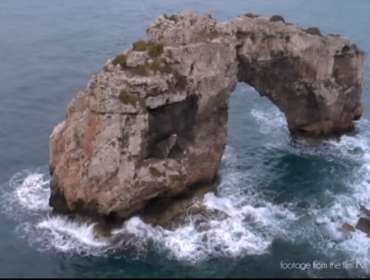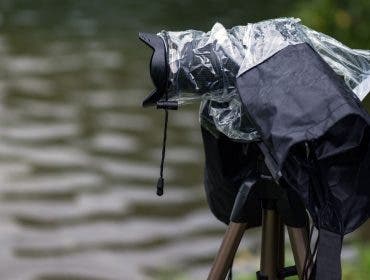Love Bite
When my friends at Adorama asked me to write a feature on capturing animals in action, I sprang into, well, action! – because I enjoy experimenting with shutter speeds to take creative control of my photography and either “freeze” or blur animals in action.
The opening shot for this article is an example of action photography. I took this photograph, which I call, “Love Bite” in Botswana. My camera and settings: Canon 1D Mark II, Canon 100-400mm lens, ISO 200, f/7.1 @ 1/400th second.
What’s the best lens for capturing action? The answer is simple: “It depends.” Here are three main factors to take into consideration before making a lens selection.
1) Subject distance – as the camera-to-subject distance increases, you need a longer lens. Some professional wildlife photographers use the fastest super-telephoto, fixed-focal-length lenses possible, such as the Canon 500mm and 600mm lenses. Others, like me, like to use zoom lenses, including the Canon 200-400mm IS zoom with a built-in 2x converter.
2) Light level – as the light level decreases, you may need a faster (wider maximum aperture) lens. That said, you can boost the ISO to get a fast shutter speed, but that may mean more noise in your images. Of course, you can reduce noise in Photoshop and Lightroom, or with plug-ins for each program. What’s more, as my Dad used to say, “If a picture is so boring that you notice the noise, it’s a boring picture.”
Different photographers, of course, choose different lenses. I know pros that like to shoot with the Canon 300mm f/2.8 lens, while I like to shoot with the Canon 70-300mm f/4- 5.6 lens.
3) Your budget –Fast, fixed-focal-length lenses, like the Canon 600mm, are pricy. Zoom lenses, like my favorite action zoom lens, the Canon 100-400mm IS, are usually more affordable (the Canon 200-400mm IS zoom with a built-in 2X converter is an exception).
“What’s the best shutter speed for capturing action?” That’s another question I get asked. And guess what? The answer is the same: “It depends.”
It depends on how fast the subject is moving and it depends on the mood or feeling you want to create with your photograph.
As a general rule, to “freeze” action, I don’t shoot action shots at shutter speeds slower than 1/500th of a second, but it’s often faster. To blur subject movement, I use shutter speeds of 1/30th to a 1/5th of a second.
In both cases, the key is to experiment with different shutter speeds to get the desired effect.
So let the action begin! Here are few of my favorite action photographs, along with some lens, settings and shooting info.
Roar of the Wild
Location: Maasia Mara
Camera:Canon 5D Mark III
Lens:Canon 200-400mm f/4L IS with built-in 1.4x tele-converter.
Settings: ISO 500, f/6.3 @ 1/200th sec.
Tip: This is one of my favorite wildlife action shots, because it captures the peak of action between these two lions that are having a “lover’s spat.” So the tip is, shoot for the peak of action. Setting your camera to the fastest frame rate will help increase your chance of nailing the shot.
On the Run
Location: Maasia Mara
Camera: Canon 5D Mark III
Lens:Canon 70-300mm f/4-5.6L IS
Settings: ISO 100, f/36 @ 1/15th sec.
Tip: I worked hard getting this shot of a wildebeest running at top speed. To convey the feeling of action, I panned and used a slow shutter speed. It took me many tries to get the exact effect I wanted. Yes. Practice makes perfect.
Dive Bomber
Location: Alaska
Camera: Canon 5D Mark III
Lens:Canon 100-400mm f.4.5-5.6L IS II
Settings: ISO 640, f/5.6 @ 1/3200ths sec.
Tip: Bald eagles can fly up to 90 miles an hour! This guy was not going that fast, but he was speeding. I knew I needed a fast shutter speed to stop the action, so I shot at a fast shutter speed. When in doubt, use a faster shutter speed than you need.
White Beauty
Location: Provence, France
Camera: Canon 5D Mark III
Lens:Canon 70-200mm f/2.8L IS II
Settings: ISO 400, f/8 @ 1/1600th sec.
Tip: When photographing running horses, the position of the legs is very important. You need to shoot a lot of images by setting your camera to its highest frame rate to get a shot that is flattering to the horses. For this photograph, as with all my action shots, my Canon 5D Mark III camera is set to AI Servo focus, which tracks a subject right up to the moment of exposure. So the tip here: take your camera off one-shot and set it to continuous focus.
After the Storm
Location: Maasia Mara
Settings: ISO 160. F/7.1 @ 1/320th sec.
So far we have talked about using telephoto lenses to capture wildlife action. Wide-angle to short-telephoto zoom lenses can also be used for action photography – when you are close to the subject and when you want to take more of an environmental photograph. I always encourage my photo workshop students to take environmental photographs as well as close-ups – because both types of photographs help us to tell a story.
Well my friends, I hope these quick tips help you with your action photograph. If you’d like to see more examples of my action photographs, check out on-line class, Master the Art and Craft of Bird Photography, which is listed on my site: www.ricksammon.com. For readers of this article, I have a special discount code: Adorama-rocks. Use that code to get $10 off the class, which brings the cost from $29.00 to only $19.00.
I also lead action-packed photo workshops. Please see my site for info: www.ricksammon.com.
Explore the light,
Rick
